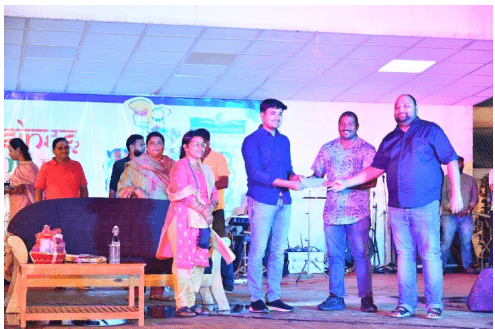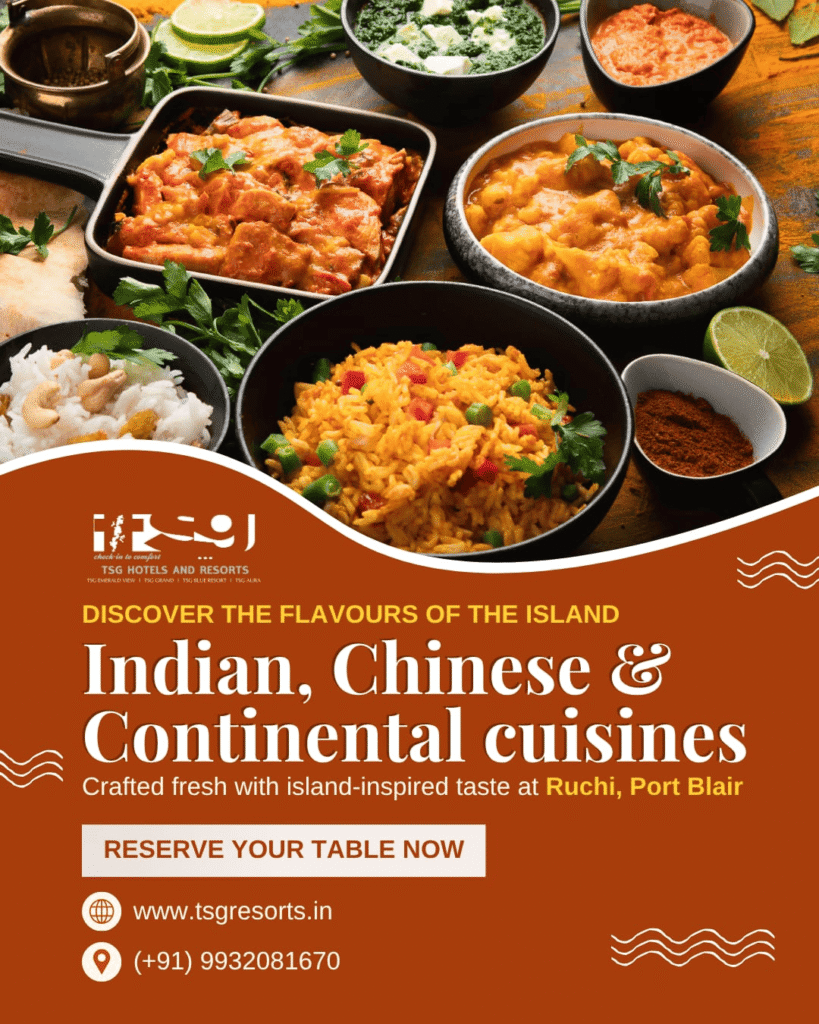Sri Vijaya Puram’s ITF Pavilion transformed into a vibrant hub of cultural and culinary celebration as the three-day ‘Cuisines of India Festival – 2025’ came to a festive close. Organised by the Department of Tourism, Andaman & Nicobar Administration, in collaboration with the Food Safety Department and other allied departments, the event drew food lovers and cultural enthusiasts from across the islands. With the theme #desidelights, the festival aimed to showcase India’s regional cuisines while promoting healthy eating, preserving traditional food practices, and fostering community participation.
Held from July 3 to 5, the festival brought together an eclectic mix of local food entrepreneurs, home chefs, and culinary experts who set up stalls offering everything from sweet delicacies to regional savouries. Visitors thronged the ITF Pavilion between 4 pm and 10 pm daily, relishing dishes that represented the cultural diversity of the subcontinent. From Bengali sweets to South Indian snacks, the festival was a sensory journey through taste, smell, and colour.
Adding to the ambience were cultural performances by Kalapani Band and Sagar Club, who entertained the crowd with musical renditions and traditional numbers. Their performances became a major attraction each evening, drawing large crowds and providing a musical backdrop to the bustling food stalls.
On the final day, a prize distribution ceremony was held to recognise the best food stalls. Doiwala Sweets from School Line bagged the top spot, earning a cash prize of ₹10,000. Calcutta Sweet Stall from Junglighat secured the second prize with ₹8,000, while Icy Spicy, also from Junglighat, was awarded third place and ₹5,000. These awards were seen as an effort to encourage local businesses and reward culinary excellence.
Tourism officials expressed satisfaction with the smooth organisation and positive public response to the event. They credited the coordinated efforts of various departments, including Art & Culture, for ensuring seamless execution. The presence of a large crowd each day was seen as a sign of the community’s growing interest in cultural and gastronomic events.
According to the organisers, one of the core objectives of the festival was to give visibility to small vendors and food artisans, providing them with a platform to reach larger audiences. By encouraging homegrown culinary talent, the festival also aimed to boost the local economy and create new opportunities in the food and tourism sectors.
Officials from the Tourism Department indicated plans to organise similar festivals in the future, both during peak tourist seasons and in off-season months, to ensure continuous engagement with local culture and heritage. These festivals are expected to contribute to destination branding while giving tourists authentic experiences rooted in local traditions.
The ‘Cuisines of India Festival – 2025’ also served as a reminder of the soft power of food in uniting people and building social cohesion. As visitors shared meals and enjoyed performances together, the event strengthened a sense of belonging and pride in regional heritage.
With the success of this edition, the festival has set a benchmark for future events. Organisers are expected to incorporate feedback from participants to scale up operations, include more regional cuisines, and invite more artists and entrepreneurs. For now, the ITF Pavilion stands as a symbol of how food and culture can bring a community together, one dish at a time.





